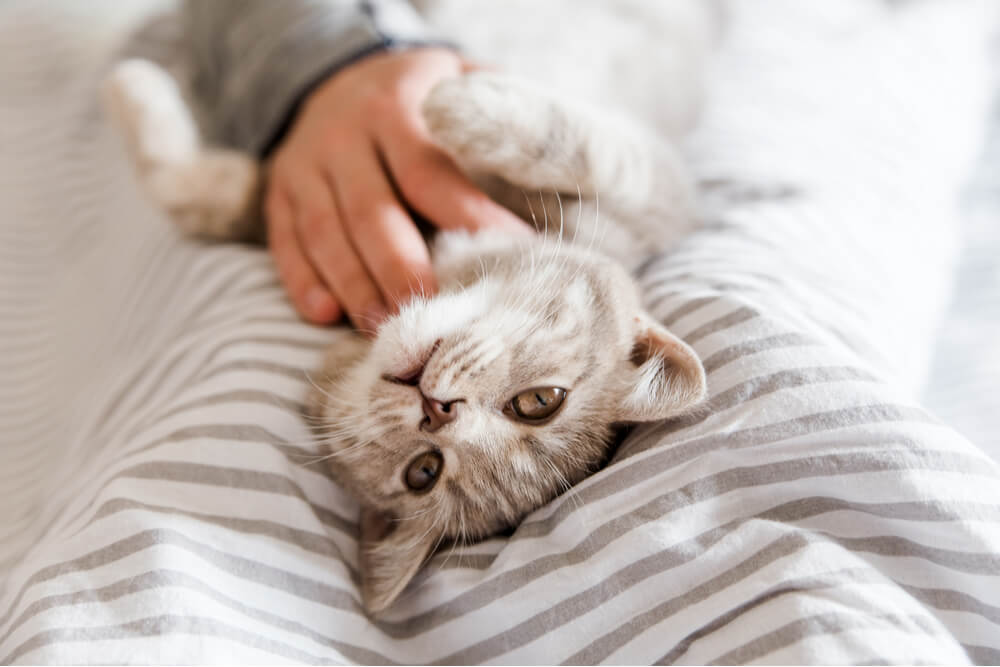
Epilepsy is a syndrome that describes the situation where a cat has recurrent seizures (also known as convulsions or fits) at intervals that may be days, hours, or months apart. Epilepsy can affect small animals (cats and dogs) just as it can affect humans.
Quick Overview: Epilepsy In Cats







What Are Seizures?
Seizures are caused by excessive electrical activity in the brain, with the random firing of nerve impulses leading to loss of consciousness with uncontrolled, uncoordinated contractions of some or most muscles of the body., along with other signs like salivation, drooling, urination and defecation.
Then after the seizure, as the cat recovers, in the post-ictal period, there’s disorientation, behavioral changes, staggering, and a period of gradual recovery. Seizures can be generalised (grand mal) or partial seizures (focal seizures).
To learn more about the details of what epileptic seizures actually are, and how they manifest in cats, pet owners should read our separate article about “Seizures in cats”, and watch the short explanatory video.
This article is specifically about epilepsy (recurrent seizures) as a condition, describing the different types seen in cats, and explaining the veterinary approach to feline epilepsy, including diagnosis of the causes of seizures, management, and therapy.
Types of Epilepsy in Cats
Feline epilepsy is divided into two types based on the cause of seizures.
- Primary (also known as idiopathic) epilepsy, or epilepsy of uknown origin. In this type of epilepsy, there is no known physical cause of the seizures. When advanced brain imaging is carried out, no abnormalities can be identified, and even on autopsy after a cat has died, no structural changes can be found in the brain. The cause may be genetic, inherited from the cat’s parents, although there are many cases where this does not seem to be the case. Often, primary epilepsy develops for reasons that cannot be understood. Epilepsy of unknown origin occurs in 30-60% of cats with seizures and around 26% of the cats diagnosed with seizures at less than one year of age
- Secondary (also known as acquired ) epilepsy. In this type, an underlying physical abnormality can be identified by the history, blood tests or diagnostic imaging. Examples include seizures caused by extracranial (i.e. not inside the skull) metabolic abnormalities that can be identified by blood tests (such as liver disease, kidney failure and hormonal disorders such as hyperthyroidism) or those caused by brain diseases that can be pinpointed with imaging (including injuries, tumors such as meningiomas, vascular disease, infectious diseases and immune-based disorders). Secondary epilepsy accounts for around 50% (40-70%) of cases of cats with epilepsy. Some of these causes are age-related e.g. meningiomas and hyperthyroidism are more common in older cats.
Diagnosing the Type of Epilepsy
Sometimes the immediate history of an affected cat will point to the cause (e.g. a cat from a genetic line of cats that have a history of epilepsy), but in most cases a detailed investigation is needed to make a diagnosis .
- This starts with a detailed review of the cat’s history (when did the seizures start etc), and a careful assessment of clinical signs (physical examination of the patient is still the hallmark of good veterinary medicine).
- Investigations may then become complex, involving blood tests (e.g. to measure metabolic enzymes and chemicals such as bile acids to assess liver function, thyroid hormones etc), urinalysis, blood pressure measurement, an electro-encephalogram (EEG), cerebrospinal fluid sampling and analysis, ultrasound, radiographs (x-rays), and advanced imaging such as computerized tomography (CT) and magnetic resonance imaging (MRI) to check for issues such as brain tumors or signs of head trauma.
- Further diagnostic testing for cats may include blood tests for feline leukemia,feline immunodeficiency viruses, and serology for underlying conditions like feline infectious peritonitis, cryptococcosis and toxoplasmosis.
In cats with primary epilepsy, no abnormality will be detected in these tests: this type of epilepsy is known as a “diagnosis of exclusion” for this reason.
In cats with secondary epilepsy, a specific underlying cause is likely to be identified following the series of tests and investigations.
An accurate diagnosis of the type of epilepsy is essential when deciding on treatment.
Treatment of Epilepsy
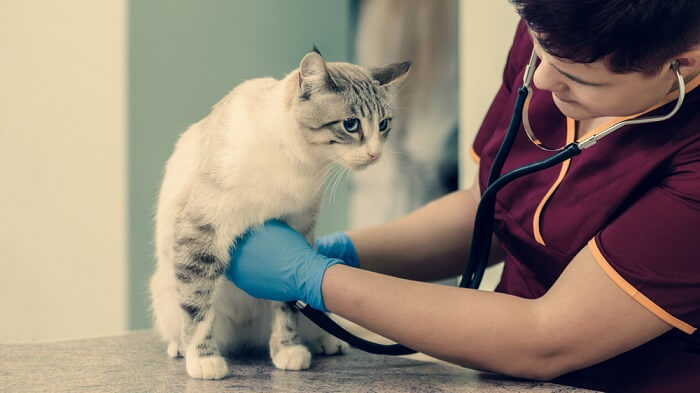
Based on your cat’s history, bloodwork, and other types of analysis and testing,your veterinarian can identify the type of epilepsy your cat is suffering from.
Most seizures only last for seconds or a few minutes, and no immediate treatment is needed other than keeping the cat safe from physical harm (read our specific article on feline seizures). Rarely, a generalized seizure may continue for more than a few minutes (so-called status epilepticus) and in such cases, the animal should be rushed to the vet for emergency treatment.
Medication such as intravenous anaesthetics or diazepam will be given to stop the immediate seizure, with further medication given as needed. It is critically important to stop seizures that have not halted spontaneously within a few minutes: if this is not done, brain damage can result.
Longer term, the treatment of seizures in cats aims to reduce the frequency of seizures, or to stop them happening at all. The type of treatment depends on the type of epilepsy.
Primary Epilepsy
If no specific underlying cause of the epilepsy can be identified, the cat is diagnosed with “idiopathic epilepsy”, and general anti-seizure medication may be needed to attain seizure control. This is not always given immediately after a single seizure, but only if a cat has seizures frequently (e.g. more often than once every six weeks) or cluster seizures (e.g. four seizures over a few days).
A number of different anticonvulsant medications (antiepileptic drugs) are available. Your DVM veterinarian will guide you to the most appropriate choice for your cat. Regular checkups are important, as seizure activity needs to be monitored, and side effects from anticonvulsants can happen, meaning that medication may need to be tweaked.
The most common first choice anticonvulsant medication is phenobarbital, but there are several alternatives that may be suggested by your veterinarian in some cases, including Zonisamide, Levetiracetam and Clonazepam. There are sometimes side effects from medication e.g. phenobarbital can cause polydipsia (increased thirst), polyuria (increased urination) polyphagia (increased appetite), sedation, and ataxia (loss of full coordinated control of the body).
In the past, other medications have been used, including potassium bromide, primidone and phenytoin, but for various reasons, including lack of availability and possible side effects, these are no longer as widely prescribed.
Secondary Epilepsy
As well as the same type of anticonvulsants used to control seizures in cats with primary epilepsy, cases of secondary epilepsy may require specific treatment depending on the underlying cause. This may mean specific therapy for a metabolic disease (such as liver or kidney problems), or any other treatment intervention that aims to resolve the primary cause (such as surgery for a brain tumor).
Monitoring a Cat With Epilepsy
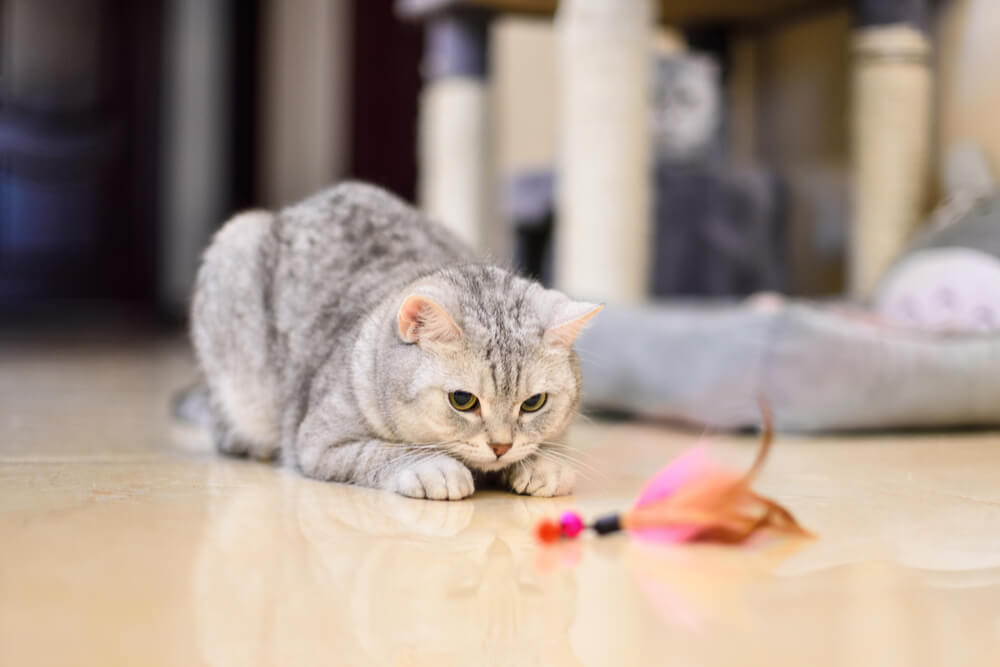
It’s crucial to keep a seizure diary, logging each time your cat has a seizure. Log details about time, duration, recent events, and other details of the seizure.
With any epileptic animal, it’s important for an owner to keep a seizure diary, recording the time of onset, description, and duration of each seizure. Any recent changes in medication, diet, lifestyle or other events should be noted. Smartphone apps make it easier to keep this type of record, and the results should be discussed with your veterinarian every 3 – 12 months, depending on seizure frequency.
If your cat is on long term anti-seizure medication, your vet may recommend regular blood tests to ensure that therapeutic levels are maintained, and/or to monitor any impact of the drug on the cat’s body systems: the need for this depends on the type of medication being given.
Can Feline Epilepsy Be Cured?
If the primary cause of secondary epilepsy can be removed (e.g. underlying illness, a poison or a brain tumor) then the seizures may be permanently cured.
If a cat suffers from primary epilepsy, then the seizures may be controlled by lifelong anticonvulsant therapy, but there is significant individual variation in the response to medication and in the long term prognosis for effective control.




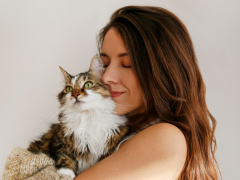


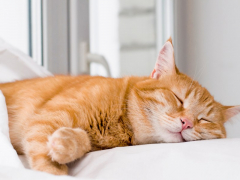
For cat owners, this is a great science article